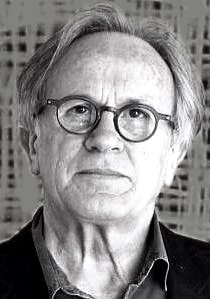J. Teixidor
The year 196 6 was especially significant in his professional career, since, in addition to holding his first solo exhibition in the Sala Mateu in his hometown, he was appointed, together with José María Yturralde, curator of the Museum of Abstract Art of Cuenca, where he will work on summers of 1966 and 1967 and where he met the generation of the so-called “Cuenca group”, made up of, among others, Gustavo Torner, Gerardo Rueda and Fernando Zóbel.
In 1973 he traveled to New York for the first time, where he was directly acquainted with American painting of the fifties, focusing his interest above all on Mark Rothko, Barnett Newman and Ad Reinhardt. De Newman assimilates the use of side bands, which he consciously incorporates into his work.
In 1976 he participated in the Venice Biennale in the show Spain: Artistic Vanguard and Social Reality. 1936-1976.
In 1997 he had a retrospective exhibition at the Valencian Institute of Modern Art, which was closed in a large room with sixteen black paintings. During the following biennium he continued the use of black with greater rigor, although he incorporated gold colors as the only component of the painting. It is the moment of the Nordic Landscapes and of the trilogy made up of The End of the Battle, The Death of Virgil and The Defeat.
In 2000 he was appointed academic of the Royal Academy of Fine Arts of San Fernando in Madrid. After the last mentioned series, he paints pictures made with lines that intersect on black surfaces, recovering gestural aspects from other times. With the series dedicated to The Death of the Anarchist, from 2002, the areas worked gesturally are incorporated into large-format horizontal paintings. In other almost simultaneous series, he continues the use of black as a color field that is both generative and provocative, while in the Africa series and Ulrich’s visit he incorporates informal and whimsical elements in counterpoint to the general rigor of the work.

